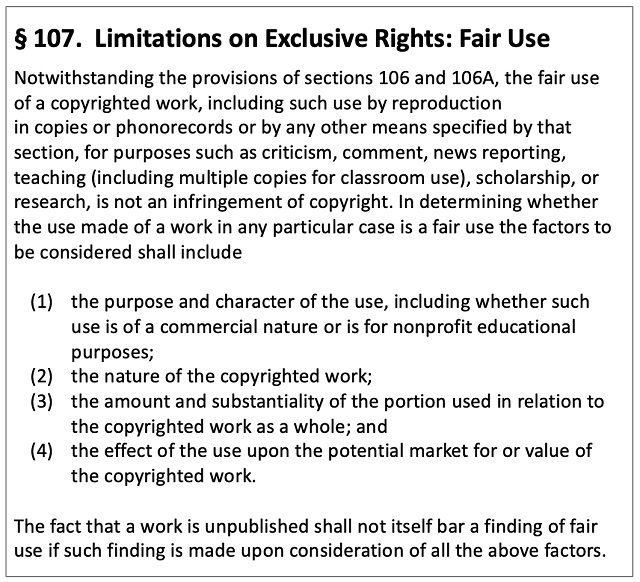Plaintiff owns the copyright in a photo of Meghan Markle, also known as the Duchess of Sussex, taken at a high school dance she attended almost a quarter century ago. In the photo (available here), the future royal poses next to her date in front of a Christmas tree. Wearing a clinging, sparkling black dress, with a long slit up the leg, she looks classy, like Cinderella at a ball, but with a faraway gaze that (if I am not mistaken) betrays the knowledge that her destiny lies somewhere else. Her companion, at least to me, looks a little stunned, as if it dawned on him, at the moment the camera shutter closed, that he was punching above his weight. Perhaps I am retrojecting based on the knowledge of what Meghan would ascend to ... or maybe I am projecting based on my own high school experiences. You can judge for yourself the story that this photo, from my junior prom, tells:

But back to the case.
A user with the handle "velvetcoke" posted the plaintiff's photo of Markle, without permission, on Instagram. Defendant embedded the photo in an article published in December 2019 with the headline "Meghan Markle's 'ageless' high school prom photo has wowed royal fans" (precisely the type of clickbait that would have ensnared me). The article describes the photo (including Markle's dress and hairstyle) and reports that the post got a tons of likes. The defendant embedded the same photo in a second article published a year later in which it described the photo as newly resurfaced (so much for fact-checking), remarked at how little Markle has aged (absolutely true), and describes some of the comments posted by Instagram users about the photo (appropriately fawning, all of them).
The defendant moved to dismiss under Rule 12(b)(6). Presumably because the plaintiff had not, herself, posted the image on Instagram, the defendant! didn't argue that the plaintiff had authorized it (and others) to use Instagram's tools to embed the photo, based on Instagram's TOU and other governing documents. (See this post and this post.) The prominence of the defendant's use of the photo doomed any de minimis argument. And the defendant, at least for now, didn't argue that the act of embedding a photograph on a website, as a matter of law, does not infringe upon the copyright owner's display rights. Compare Perfect 10, Inc.v. Amazon.Com, Inc., 487 F.3d 701 (9th Cir. 2007) and Goldman v. Breitbart News Network, 302 F. Supp. 3d 585 (S.D.N.Y. 2018). (And see this post.)
So that left fair use. Drawing all inferences in favor of the plaintiff, the court denied the defendant's motion to dismiss on fair use grounds. Below is a quick rundown of the court's analysis of the statutory factors.

Purpose and Character of the Use. The defendant argued that whereas the plaintiff's original purpose for the photo was "to capture memories for Markle and her companion and possibly her classmates and school," it had used the photo for the different, transformative purpose of reporting "on the public's reaction to the Instagram posts containing the photograph." The court didn't buy it, finding that, at least at the pleading stage, the "articles displaying the photograph both use [plaintiff's] photograph to illustrate Markle's appearance at a high school dance - the same reason that the photograph was created." In addition, the court "was not persuaded" by the defendant's argument that '"embedding an Instagram post featuring a copyrighted photograph in an article that reports on the post is itself transformative." The court distinguished two prior cases in the SDNY - Walsh v. Townsquare Media, Inc. (see this post) and Boesen v. United Sports Publications, Ltd. - where online publications had embedded Instagram posts from celebrities announcing a makeup collaboration (Walsh) and retirement from professional tennis (Boesen). In those cases, the courts held that the "incidental" use of the photos constituted fair use because the publishers were reporting on the announcements. By contrast, in this case, "the content of the post itself (aside from the allegedly infringing photograph) was not the focus of the reporting - the appearance of Markle as a high school student was." Moreover, the court colorfully noted:
"If 'embedding' an Instagram post featuring a copyrighted photograph was itself transformative, this would permit news websites to use social media posts of copyrighted photographs to, I'll describe it as, launder copyright violations."
Finally the court rejected that the uses were transformative based upon the "commentary" that the defendant had included in their articles about the public's reaction to the photo. The plaintiff had plausibly alleged that the defendant had used the photograph merely for illustrative purposes, and "to the extent that [the articles] add any new information, new aesthetics, new insights and understandings to the image ... it appears to be minimal" (citations omitted). In addition, the court also found that the plaintiff had sufficiently alleged that the use was commercial, which also weighed against a finding of fair use.
The Other Factors. The court made quick work fo the other statutory factors. The court found the second factor (nature of the copyrighted work) to be neutral, because the photo had been published previously and even though the photo "evince[d] at least a modicum of artfulness, sufficient to designate it a creative (rather than 'factual') work for purposes of fair use analysis." The third factor (amount and substantiality of copyrighted work used) went for the plaintiff, since the defendant had used nearly the entire photo. And the fourth factor (effect on the market) also weighed against a finding of fair use since "the publication can reasonably be expected to harm [plaintiff's] ability to license the work for publications and uses in derivative works."
The court concluded by nothing that:
"Allowing a news publisher to poach an image from a social media account for an article that focuses on describing what the image depicts does not promote 'the Progress of Science and Useful Arts'"
Originally Published by Advertising Law Updates
This alert provides general coverage of its subject area. We provide it with the understanding that Frankfurt Kurnit Klein & Selz is not engaged herein in rendering legal advice, and shall not be liable for any damages resulting from any error, inaccuracy, or omission. Our attorneys practice law only in jurisdictions in which they are properly authorized to do so. We do not seek to represent clients in other jurisdictions.
